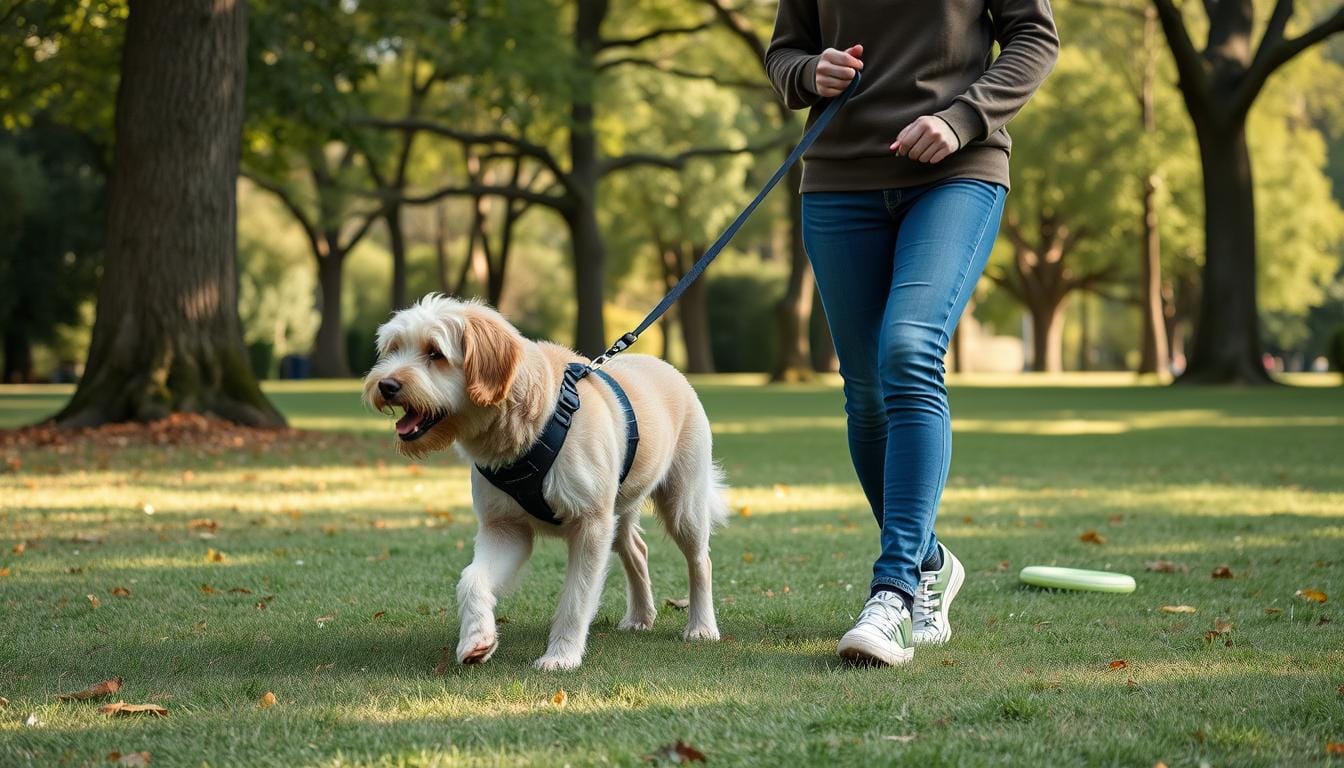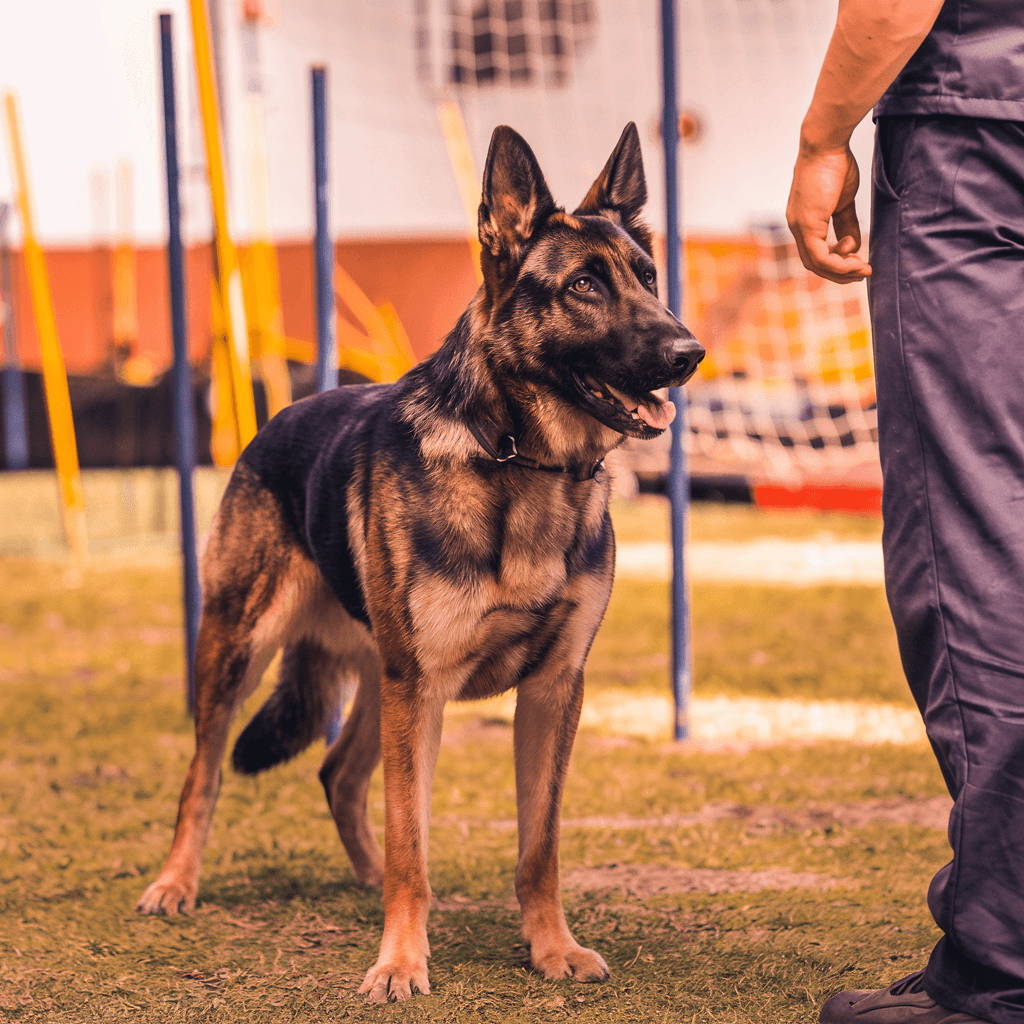As pet owners, we always want the best for our furry friends. But it’s not always easy to tell if something’s wrong with their health. Dogs are experts at hiding their pain, a trait from their wild ancestors.
Understanding dog symptoms is key to ensuring proper pet care. We need to be vigilant and look for subtle changes in our dogs’ behavior and physical condition. From changes in activity levels to unusual vocalizations, these clues can help us identify when our canine companions are hurting.
Different breeds may express pain differently. For example, Labrador Retrievers and Mastiffs tend to have a higher pain tolerance, while breeds like Whippets and Chihuahuas are more sensitive. Regardless of breed, it’s crucial to pay attention to any changes in your dog’s normal behavior or routine.
Chronic pain, often seen in senior dogs, can be caused by conditions like arthritis or cancer. These long-term issues might lead to changes in sleep patterns or even mood shifts. On the other hand, acute pain from sudden injuries or illnesses can cause more obvious signs like yelping or limping.
If you notice any unusual signs or behaviors in your dog, it’s best to consult with a veterinarian. They can help diagnose the underlying cause and recommend appropriate treatment options. Remember, early detection and proper care are vital for maintaining your dog’s health and happiness.
Key Takeaways
- Dogs often hide their pain due to survival instincts
- Watch for changes in behavior, posture, and activity levels
- Different breeds may show varying pain sensitivities
- Chronic pain is common in older dogs and may cause subtle changes
- Sudden pain can result from injuries or acute illnesses
- Consult a vet if you suspect your dog is in pain
- Early detection and treatment are crucial for your dog’s wellbeing
Understanding Why Dogs Hide Their Pain
Dogs are experts at hiding pain. This skill comes from their wild ancestors. It helps them survive. Knowing this is important for pet owners.
Natural Survival Instincts
Canine instincts guide how dogs deal with pain. In the wild, showing weakness could attract predators. This behavior still exists in our pets, making it hard to see when they’re in pain.
Evolution from Wild Ancestors
Dogs’ pain response comes from their wolf ancestors. They learned to hide discomfort. This skill, once vital, now makes it hard for us to know when they’re hurt.
The Importance of Early Detection
Spotting pain early is crucial for your dog’s health. Dogs hide pain until it’s severe. Regular vet visits are essential.
Look for changes in behavior, appetite, or activity. These signs can mean they’re in pain. By being alert, we can get them the care they need quickly.
“Pets hide pain as an evolutionary behavior developed long ago to protect themselves from predators.”
Knowing about dog behavior helps us be better pet parents. By recognizing signs and getting vet care fast, we can keep our pets happy and healthy.
Physical Signs of Dog Pain and Discomfort
Dogs often hide their pain, making it hard for us to notice. It’s important to know the signs of discomfort to help them early. Let’s look at the key signs that your dog might be in pain.
Changes in Body Posture
A dog’s posture can tell us a lot about their health. When in pain, dogs may stand differently. They might put their front legs back to ease pain.
An arched back or a head that’s too low are signs of discomfort too.
Visible Physical Symptoms
Pain in dogs can show in many ways. Knowing these signs is key for quick help. Watch for:
- Tight or twitching muscles
- Shaking or trembling
- Redness or swelling in specific areas
- Excessive panting or drooling
- Self-mutilation (licking or chewing at painful spots)
Movement and Mobility Issues
Pain can make it hard for dogs to move. Dog limping is a common sign, especially for joint pain or arthritis. Other signs include:
| Mobility Issue | Possible Indication |
|---|---|
| Reluctance to jump or use stairs | Hip or back pain |
| Difficulty lying down or getting up | Joint stiffness or arthritis |
| Reduced play or exercise enjoyment | General discomfort or fatigue |
| Tail tucked in or lowered | Abdominal or lower back pain |

Spotting these signs early can help your dog feel better sooner. If you see any of these, see a vet right away. They can help diagnose and treat your dog’s pain.
Behavioral Changes That Indicate Pain
Dogs often show subtle signs when they’re hurting. We need to watch for changes in their behavior to spot potential pain. Let’s explore some key indicators that your furry friend might be uncomfortable.
Changes in Activity Level
A dog in pain may become less active. You might notice your pet avoiding stairs, refusing walks, or struggling to get up. On the flip side, some dogs become restless when they’re hurting. Look out for excessive pacing or inability to settle. Dog restlessness can be a clear sign something’s wrong.
Social Interaction Changes
Pain can make dogs irritable or withdrawn. They might growl when approached or avoid contact altogether. If your usually friendly pup starts hiding or snapping, it could be due to discomfort. Pay attention to any sudden aggression or social avoidance.
Sleep Pattern Alterations
Discomfort often disrupts sleep. Your dog might have trouble finding a comfortable position or wake up frequently. Some dogs pant excessively at night when in pain. Dog panting, especially if it’s unusual for your pet, can indicate distress.
| Behavior Change | Possible Pain Indicator |
|---|---|
| Decreased activity | Reluctance to move, play, or exercise |
| Increased vocalization | Dog whining, yelping, or crying out |
| Changed sleep habits | Restlessness at night, trouble settling |
| Altered social behavior | Aggression, withdrawal, or neediness |
Remember, these changes can be subtle. If you notice any of these signs or other unusual behaviors, it’s best to consult your veterinarian. Early detection of pain can lead to quicker treatment and relief for your beloved pet.
Common Types of Pain in Dogs
It’s important to know about dog health issues for their pain management. Dogs can feel different kinds of pain, each with its own signs and problems. Let’s look at the most common pain types our furry friends might face.
Acute Pain Symptoms
Acute pain in dogs happens suddenly and can be very intense. Signs include:
- Yelping or whining when touched or moving
- Limping or difficulty walking
- Sudden aggressive behavior
- Increased breathing rate and excessive panting
Chronic Pain Indicators
Chronic pain takes time to develop and can be tricky to spot. Watch for:
- Reduced appetite and lethargy
- Reluctance to climb stairs or jump
- Decreased enjoyment in play or exercise
- Increased anxiety or hiding behaviors

Age-Related Pain Signs
Senior dogs often face special pain challenges. Look out for:
- Joint stiffness or difficulty moving
- Changes in sleep patterns
- Increased irritability
- Subtle behavior changes that may be hard to notice
Spotting these pain symptoms early is crucial for our dogs’ health. If you see any signs, talk to your vet right away. They can help with diagnosis and pain management.
How Different Dog Breeds Express Pain
Dog breed characteristics greatly affect how our pets show pain. Each breed has its own way of dealing with pain, making it key for owners to know their dog’s traits. Some breeds are very calm, while others show pain more clearly.
Studies show that bigger dogs like Labradors and Mastiffs often handle pain better. They might not show pain signs even when they’re really hurting. But, smaller dogs like Chihuahuas and Whippets tend to be more open about their pain.
It’s important to know how different breeds show pain to catch it early. For instance:
- Herding breeds might hide pain to keep working
- Sporting dogs might ignore pain during activities
- Toy breeds could pull back when they’re hurt
It doesn’t matter what breed your dog is. Look for changes in how they act, eat, or move. These signs can mean they’re in pain. By understanding your dog’s pain signs, you can help them feel better sooner.
When to Seek Emergency Veterinary Care
Knowing when your dog needs urgent medical help is key to their health. We’ll show you how to spot critical pain signs, emergency situations, and what to do when your pet needs fast care.
Critical Pain Symptoms
Dogs in severe pain show clear signs that need quick vet care. Look out for:
- Constant crying or whimpering
- Extreme lethargy or collapse
- Inability to move or walk
- Severe swelling or bleeding
- Difficulty breathing or rapid panting
Emergency Situations
Some health issues need immediate vet help for effective pain relief:
| Emergency Condition | Signs |
|---|---|
| Bloat | Distended abdomen, non-productive retching |
| Poisoning | Vomiting, seizures, abnormal behavior |
| Trauma | Visible injuries, limping, bleeding |
| Heatstroke | Excessive panting, weakness, collapse |
Immediate Action Steps
If you think your dog needs emergency care:
- Stay calm and assess the situation
- Contact your emergency vet immediately
- Follow the vet’s instructions for first aid
- Transport your dog safely to the clinic
- Bring any relevant medical records or ingested substances
Acting fast in emergencies can greatly help your dog’s recovery. Don’t delay in getting professional help if unsure about your pet’s health.
Treatment Options for Dogs in Pain
We have many ways to help dogs with pain. Dogs often hide their pain, so we must act fast. Let’s look at some good ways to help our furry friends feel better.
Pain medicines are often the first choice. Nonsteroidal anti-inflammatory drugs (NSAIDs) work for mild to moderate pain. Opioids are used for more serious pain. But, remember, human pain pills are bad for dogs because they are different.
For long-term issues like osteoarthritis, which affects about 40% of dogs, we have long-term solutions. These include:
- Gabapentin for nerve pain
- Tramadol for older dogs with constant pain
- Laser therapy to help cells heal
- Physical therapy and massage
In some cases, like intervertebral disk disease (IVDD), surgery might be the best choice. Always talk to a vet to find the best treatment for your dog.
| Treatment Type | Best For | Examples |
|---|---|---|
| NSAIDs | Mild to moderate pain | Carprofen, Meloxicam |
| Opioids | Severe pain | Tramadol |
| Alternative Therapies | Chronic conditions | Laser therapy, Acupuncture |
| Surgery | Specific conditions | IVDD treatment |
Early treatment of pain can stop chronic pain. By working with our vets, we can give our dogs the best care. This helps them live a happy life.
Home Care and Pain Management Strategies
We know how important it is to help our dogs feel better at home. They can’t always tell us when they’re in pain. So, we must provide them with comfort and care. Let’s look at some effective ways to manage your dog’s pain at home.
Environmental Modifications
Creating a cozy space for your dog is key. Use ramps to help them get on furniture or into cars. Raising their food and water dishes can also help prevent neck strain. These small changes can greatly improve your dog’s comfort every day.
Activity Adjustments
Changing your dog’s activity level is crucial for managing pain. Shorter walks and avoiding activities that hurt, like jumping, are good ideas. Swimming is a low-impact exercise that’s great. Remember, rest is important for healing, especially for injuries without blood supply.
Comfort Measures
Comfort measures are vital for dog pain relief at home. Cold therapy helps with acute injuries by reducing swelling. For long-term pain, heat therapy can help with circulation and muscle relaxation. Gentle massage can also soothe your dog and help them move better.
Here’s a helpful table summarizing home care strategies for different types of dog pain:
| Pain Type | Recommended Strategies |
|---|---|
| Acute Injury | Rest, Cold therapy, Limited movement |
| Chronic Pain | Heat therapy, Gentle massage, Low-impact exercise |
| Arthritis | Raised food bowls, Soft bedding, Ramps for furniture |
Remember, these home care strategies should work alongside professional vet advice. Always watch how your dog reacts to these methods. If the pain doesn’t get better or gets worse, talk to your vet.
Preventing Pain-Related Complications
Keeping your dog healthy is key to avoiding pain issues. Regular vet visits are essential. They help spot problems early, before they cause pain. Remember, September is Animal Pain Awareness Month, a great time for a vet check-up.
Keeping your dog at a healthy weight is also important. Too much weight can hurt their joints, leading to arthritis. Regular exercise helps keep your dog’s weight in check and joints flexible.
Watch for changes in your dog’s behavior. Dogs often hide pain. Signs like less appetite, more sleep, or not wanting to play can mean they’re in pain. Catching these signs early can help avoid bigger problems later.
Think about adding alternative therapies to your dog’s care. Some vets use Class IV laser therapy for pain relief. This, along with regular vet visits and a healthy lifestyle, helps keep your dog pain-free for years.
















